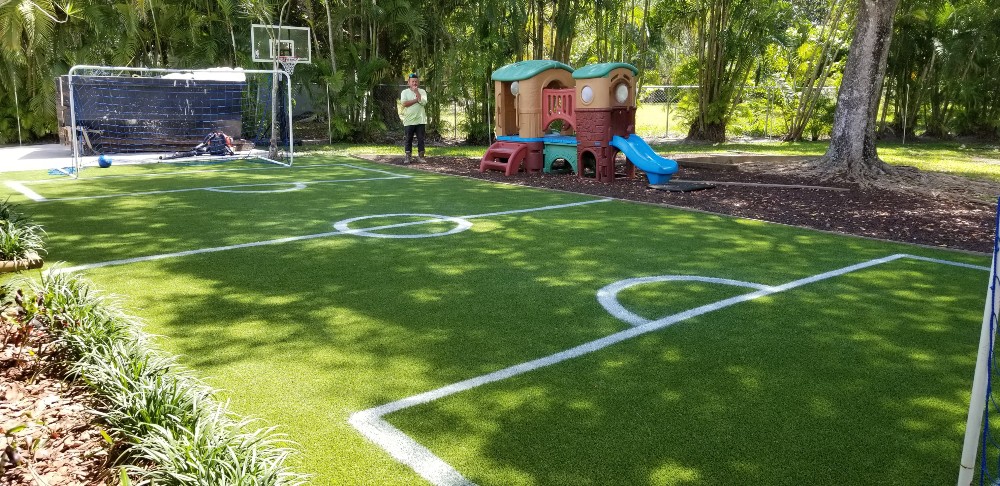In recent years, the world of sports has witnessed a significant shift in the choice of playing surfaces, with synthetic turf gaining popularity across various disciplines. The decision to replace natural grass with artificial turf on sports fields is not merely a trend; it’s a strategic move that comes with a multitude of benefits. In this blog post, we’ll explore why synthetic turf for sports fields is a great idea, considering factors such as durability, playability, and environmental impact.
- Year-Round Playability: One of the primary advantages of artificial grass is its ability to withstand various weather conditions, offering athletes a consistent playing surface throughout the year. Unlike natural grass, which can become muddy and uneven in inclement weather, synthetic turf provides a reliable playing surface regardless of rain, snow, or extreme temperatures. This ensures that sports events can take place as scheduled, minimizing disruptions and providing athletes with a dependable field to showcase their skills.
- Durability and Low Maintenance: Synthetic turf is renowned for its durability, making it an ideal choice for sports fields that endure heavy foot traffic and rigorous activities. Unlike natural grass, which requires meticulous care, watering, and fertilization, artificial turf demands minimal maintenance. This not only reduces the overall cost of upkeep but also allows sports facilities to allocate resources more efficiently, ensuring that the field remains in top condition for years to come.
- Consistency in Performance: Natural grass fields are susceptible to wear and tear, leading to uneven surfaces that can affect the performance of athletes. Synthetic turf, on the other hand, offers a consistent playing surface that remains stable and uniform over time. This consistency allows athletes to train and compete with confidence, knowing that the playing field won’t present unexpected challenges or hazards. The predictable surface of synthetic turf contributes to fair competition and enhances the overall quality of sports events.
- Water Conservation and Environmental Impact: Maintaining natural grass fields requires significant water consumption, especially in regions facing water scarcity. Synthetic turf, being an eco-friendly alternative, eliminates the need for constant watering. Additionally, artificial turf is often made from recycled materials, reducing the environmental impact associated with traditional turf installations. By opting for synthetic turf, sports facilities can contribute to water conservation efforts and align themselves with sustainable practices.
- Accessibility for All: Synthetic turf enhances the accessibility of sports facilities by ensuring that the playing surface remains suitable for individuals of all abilities. The even and stable nature of artificial turf reduces the risk of injuries, making sports fields safer for athletes and promoting inclusivity in sports.
In conclusion, the shift towards synthetic turf for sports fields is more than just a trend—it’s a strategic choice that brings a host of benefits to athletes, sports facilities, and the environment. From year-round playability to reduced maintenance costs and environmental sustainability, the advantages of synthetic turf make it a compelling option for the future of sports field surfaces. As sports organizations continue to prioritize the well-being of athletes and the longevity of their facilities, the adoption of synthetic turf is a testament to progress and innovation in the world of sports.
Feel free to check our of our other blogs!
